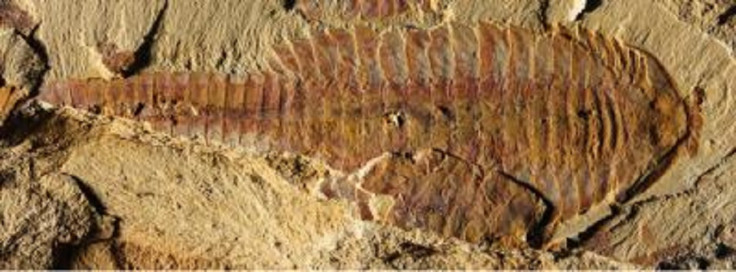Fuxianhuia Protensa: Half a Billion-Year-Old Invertebrate 'Preserved Like Pompeii' Shows First Cardiovascular System

The earliest ever example of a cardiovascular system has been discovered in a 520 million-year-old fossil discovered in the Yunnan province in China.
Fuxianhuia protensa is an ancient and extinct marine animal that lived over half a billion years ago.
An international team of researchers from the University of Arizona, China and the UK have described the fossil as the "invertebrate version of Pompeii" because it has been so well preserved.
The species is the ancestor of modern crustaceans and is the first-known cardiovascular system that has been preserved so well it shows a sophisticated system complete with a heart and blood vessels.
The three inch long fossil was entombed in fine-grain mudstone. Nicholas Strausfeld, from the University of Arizona's Department of Neuroscience, said: "This is the first preserved vascular system that we know of. Fuxianhuia is relatively abundant, but only extremely few specimens provide evidence of even a small part of an organ system, not even to speak of an entire organ system.
"The animal looks simple, but its internal organisation is quite elaborate. For example, the brain received many arteries, a pattern that appears very much like a modern crustacean."
Published in Nature Communications, the findings provide new evidence for the evolution of body organisation, helping to answer questions about arthropod history.
The Fuxianhuia vascular system was found to be more complex than many modern crustaceans. Strausfeld said: "It appears to be the ground pattern from which others have evolved. Different groups of crustaceans have vascular systems that have evolved into a variety of arrangements but they all refer back to what we see in Fuxianhuia.
"Over the course of evolution, certain segments of the animals' body became specialised for certain things, while others became less important and, correspondingly, certain parts of the vascular system became less elaborate."

As well as its cardiovascular system, the fossil also had extremely well preserved features, including eyes, antennae and external morphology.
The heart was identified at London's Natural History Museum using an imaging technique that reveals different structures inside the fossil. It had a heart and lateral arteries that the authors assume took blood around the body.
"With that, we can now start speculating about behaviour," Strausfeld said. "Because of well-supplied blood vessels to its brain, we can assume this was a very active animal capable of making many different behavioural choices."
Explaining how the fossil was so well preserved, he added: "Presumably the conditions had to be just right. We believe that these animals were preserved because they were entombed quickly under very fine-grained deposits during some kind of catastrophic event, and were then permeated by certain chemicals in the water while they were squashed flat. It is an invertebrate version of Pompeii.
"Terrible sand storms must have occurred because there were probably no plants that could hold the soils. The habitats of these creatures must have been inundated with massive fallouts from huge storms.
"As the water withdraws, animals on the seafloor dry. When the water rushed back in, they might become inundated with mud. Under normal circumstances, when animals die and are left to rot on the seafloor, they become unrecognisable. What happened to provide the kinds of fossils we are seeing must have been very different."
© Copyright IBTimes 2025. All rights reserved.






















